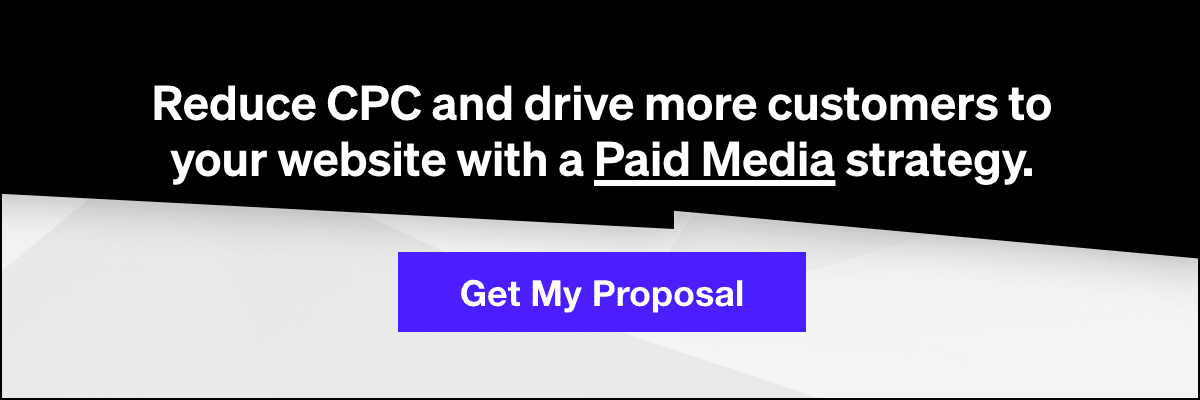Advanced Audience Retargeting with DataQ
Why First Party Data
In Google’s recent privacy policy update, they stated that they would be phasing out cross-site tracking through third-party cookies, which places a significant emphasis on the importance of first-party data. First-party data is information that businesses collect directly from their prospects and/or customers. This data can come from sources like a newsletter sign up, customer survey, or account creation. Compared to second- or third-party data, first-party data is more accurate and reliable when building remarketing best practices, and in the long run can improve customer retention, win back cart abandoners, and increase lifetime value (LTV).
What is DataQ?
Actually using your own first-party data can be difficult. Every ads platform and email service provider (ESP) demands data to be manually uploaded in a different format. There’s little ability to differentiate between high- and low-value customers, let alone pulling out actionable insights about consumer behavior.
DataQ solves this problem. It allows your first-party data to seamlessly connect to email service providers and digital ads platforms. DataQ data is automatically transferred in real time, securely and anonymously, so you’ll never miss out on up-to-date information. This gives you the option to use your own anonymized, aggregated data to power up your marketing efforts, including enabling high-value audiences on advertising platforms, and allowing you to target emails to highly specific audience segments.
DataQ is more than just an incredible audience creation and remarketing tool. It also brings detailed and actionable information on customer demographics, behavior data, and overall performance into a single dashboard. This lets your digital marketing agency find the insights they need to further improve campaign efficiency and make big-picture decisions.
Integrating DataQ Into Your Marketing Stack
For such a powerful tool, setting up DataQ is surprisingly easy to integrate with Shopify or Magento; from there, the insights dashboard is available to view, and you can integrate audiences into Facebook, Instagram, and Google Ads and multiple ESPs, including Mailchimp and Klaviyo.
Use Case Example:
Integrating Shopify with DataQ and Facebook Ads allows you to import your top 20 percent highest valued customers directly into a Facebook Ads audience, which will update automatically as you continue to gain new customers. Using this audience, you can both engage in high-value retargeting, and create high-value Lookalike audiences to find new customers who are similar to your best customers — not your average customer.
Case Studies of Unique Targeting Criteria in DataQ
Lookalikes Based on DataQ Audiences:
- mnml (men’s streetwear apparel): Power Digital Marketing implemented a “Similar to DataQ” audience as part of a prospecting Discovery campaign, and found that using DataQ lookalike audiences was far more results driven than the typical remarketing lookalikes. While comparing the two audiences, Similar to DataQ generated over 9x more revenue, nearly 10x more view-through conversions, and 12x as many clicks than the Similar to Website Engagers audience.
- Athletic Brewing (non-alcoholic canned drinks): As a top-of-funnel strategy, Power Digital Marketing used Similar to DataQ audiences on YouTube for prospecting. DataQ outperformed the Similar to Website Engagers in conversions by 1.25x, in revenue by 1.11x, and in views by nearly 2x.
With the way that DataQ identifies users into audience groups, each of the brands mentioned above were able to see huge lifts based on the audiences that best fit their needs; i.e. loyal customers, big spenders, critical retention moments. In both case studies, DataQ saw much larger reach and impact compared to typical remarketing audiences.
Increasing LTV and Repeat Purchases
As marketers, our primary goal is to not only influence sales, but to create lasting relationships with our customer base while driving long term value for the business. Optimizing towards LTV as a key metric allows us to focus on the big picture, flattening spikes from seasonality or promotions in order to gain a more holistic view of the success of our marketing initiatives.
Increasing LTV centers around three key areas within the marketing funnel:
- Understanding your customers and/or target persona
- The cost to acquire customers for your business
- Repeat purchase rate amongst your existing customer base.
Each of these key areas occupy a space within the traditional marketing funnel for awareness, acquisition, and retention. However, an argument can be made to support the idea that the first lever, understanding your customer, is of the utmost importance as it has a direct impact on Customer Acquisition Cost (CAC), repeat purchase rate, and therefore LTV.
For example, understanding who your customer base is will improve your targeting criteria and is instrumental in increasing first time conversion rate and lowering your cost per acquisition. In addition to this, understanding your customers’ product interests and affinities makes it easier to identify opportunities for upsells and ad hoc purchases, ultimately leading to an increase in repeat purchase rate.
With DataQ’s ability to slice and dice first-party customer data, marketers can easily identify trends and opportunities amongst their customer base to create as many touchpoints as possible in the marketing funnel, in order to re-engage with loyal customers and nurture them towards additional purchases.
Key Takeaways of DataQ
Leveraging first-party data is becoming increasingly imperative as we migrate into a cookie-less world. DataQ makes gathering and analyzing first-party data quick and painless. With DataQ, marketers can not only build audiences for website engagers, but also single and multi-purchasers to identify users who are big spenders, first time purchasers, or made a purchase during a specific sale. By getting hyper-detailed in our audience targeting, we can effectively scale our efforts as marketers and navigate with ease as Google updates their privacy policies.


















